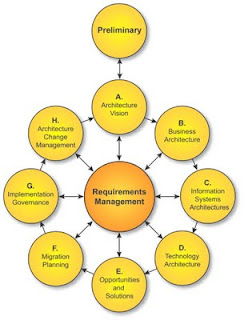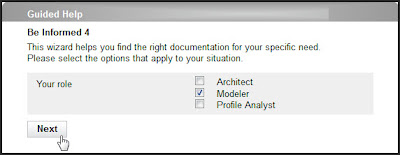Smart documentation revisited
At the STC Summit 2013 in Atlanta, I demonstrated how we can create smart documentation by using semantic technology. The session was well visited and there were a lot of good questions. During the session I modeled live - together with the audience - on a smart maintenance manual for oil tanks. To me - being from a country where we don't know or use these kind of tanks next to our houses - this felt like the ultimate example, completely relying on the expertise of my audience.
In the first step we determine the situation. We start with a short situation description and then - instead of describing what possible situations there are and linking to the pages - we ask our users about their situation.
As it is not relevant for people that don't own an oil tank yet to read the maintenance instructions, the first question we ask is whether or not the reader actually owns an oil tank. Depending on the answer here, the next actions are presented.
Based on our answers we get a recommendation. Add instructions and possible other choices to this recommendation to help the reader plan and perform the next actions.
The demo
The starting point was a very basic procedure, consisting of four main activities:In the first step we determine the situation. We start with a short situation description and then - instead of describing what possible situations there are and linking to the pages - we ask our users about their situation.
As it is not relevant for people that don't own an oil tank yet to read the maintenance instructions, the first question we ask is whether or not the reader actually owns an oil tank. Depending on the answer here, the next actions are presented.
Live modeling
After the initial demonstration of how we can use semantic models to create process-driven documentation, we started with the live modeling of a wizard that helps owners of outdoor oil tanks to determine whether or not they should take action and what action they should take. With the help of the audience we added several possible observations and linked them to the possible actions.
This model - that is the actual result of what we have modeled during the session - shows to the right a list of possible observations. These observations were mentioned by the audience. All of these observations lead to one of the three recommendations:- The tank is in good condition, you don't have to take action
- The tank needs maintenace and repairs, follow the instructions
- The tank needs to be replaced, follow the instructions
Based on our answers we get a recommendation. Add instructions and possible other choices to this recommendation to help the reader plan and perform the next actions.
Download the Powerpoint and White Paper
Read more about this topic in the White Paper "Improve your product and brand engagment through smart documentation" for the full background story and download the Powerpoint on:
Register to get updates about future Webinars, articles and presentations on the topic Smart Documentation.







Comments